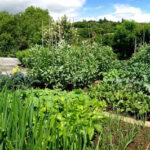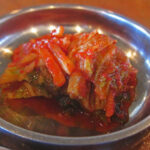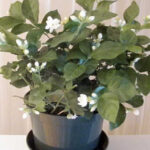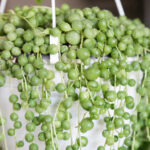Imagine yourself cozy indoors, watching the snowfall outside, and enjoying a warm dish of rich, flavorful squash. Sounds nice, right? Even though it’s spring right now, you can start preparing this meal from your garden. Growing winter squash is very easy and fruitful enough to last all winter long.
As you probably know, there are many varieties of squash — over 700! They’re separated into two categories depending on their growing season and storage.
Summer squash plants produce quickly and their fruit has a very thin rind (think zucchini).
Winter squashes, on the other hand, are ready to harvest in autumn. They have a hard, thick skin that enables them to store well throughout the winter (think pumpkin).
Also unlike summer squash, the winter ones can grow and grow without ruining their texture or flavor. Many can easily grow over two feet long. Some varieties are bred for their size and entered in competitions, like pumpkins. At the same time though, others are so small that they’re considered the perfect portion size for one person. The tastes vary as well, but most have a sweet nutty or pumpkin flavor.
Growing winter squash takes up a lot of space, but it’s a fun addition to the garden. It features large, round leaves and floppy, vibrant yellow flowers in the summer. The fruit rind comes in a huge variety of shapes and colors, doubling as autumn decorations. Most winter squash plants are sprawling vines that can grow anywhere from three to 15 feet long. There are also bush varieties, which are perfect for smaller spaces and containers.
Squash is native to Central and South America so it’s definitely not cold hardy. However, it’s very easy to grow as an annual in zones 2-11. When planned correctly, you’ll be able to harvest the goods before autumn frost can reach the plant.
There’s a lot more to learn about this plant, so let’s get started! You’ll find that squashes have a lot to offer as ornamentals, garden additions, and, of course, tasty food.
Quick Care Guide
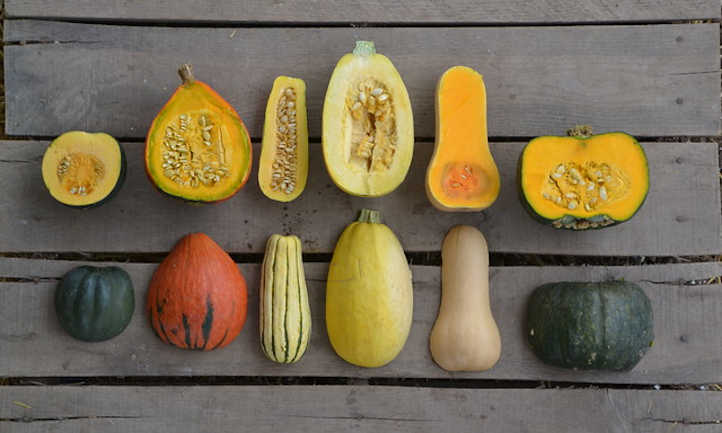
| Common Name(s) | Winter squash, delicata squash, acorn squash, spaghetti squash, butternut squash, kabocha squash, Hubbard squash, turban squash, pumpkin, sugar pumpkin |
| Scientific Name | Cucurbita maxima, Cucurbita argyrosperma, Cucurbita moschata, Cucurbita pepo |
| Days to Harvest | 75-110 days depending on variety |
| Light | Full sun |
| Water: | Consistent,even moisture, about 1″ per week |
| Soil | Well-draining, loamy, fertile |
| Fertilizer | Balanced 5-5-5 or a 5-10-10 NPK periodically through the summer |
| Pests | Squash vine borer, squash bug, cucumber beetle, aphids |
| Diseases | Bacterial wilt, mosaic virus, powdery mildew |
Winter Squash Varieties
Round or flat, smooth or rough, one-toned or two… you have quite the variety to choose from! To simplify the different types of squash and pumpkin, we’ve sorted them into categories based on shape. Here are some of our favorite squash varieties, though there are hundreds more out there.
Take note that some varieties are larger and grow more squash per plant than others. If you’re short on space, choose your varieties accordingly. Most varieties will produce more than enough fruit for one small family, so don’t overdo it!
Elongated
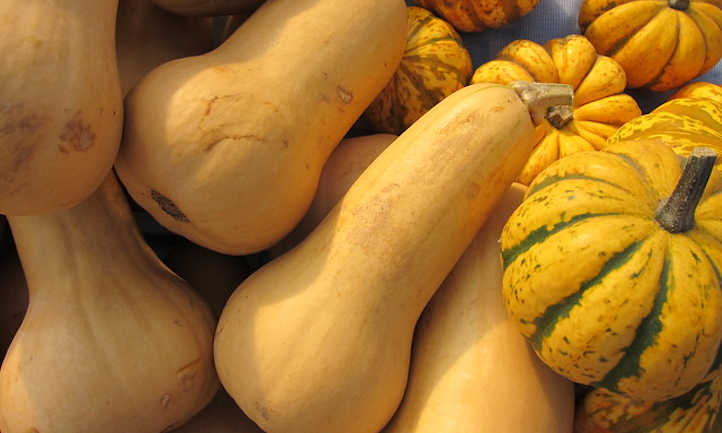
These varieties appear stretched out in shape. We’re sure you’ll recognize the classic butternut squash, but there are many, many others. We’ve chosen a good variety to give you an idea of the elongated options.
| Name | Days to Maturity | Description | Where to Buy |
| Waltham Butternut | 85 days | One of the most popular varieties. Butternut squash has a nutty taste and cooks to a dense yet soft texture. The fruit is medium-sized (12-15”) and stores well. | Buy Seeds |
| Organic Tahitian | 110 days | This butternut squash cultivar can grow to an impressive 3 feet or longer! It supplies plenty of sweet flesh for cooking. | Buy Seeds |
| Jumbo Pink Banana | 105 days | This plant has a high yield of slightly pink squashes with sweet, bright orange flesh. Each fruit can grow to be 40 pounds or more! | Buy Seeds |
| Goldetti | 100 days | Dine luxuriously with the savory, golden flesh of this spaghetti squash. This is a semi-bush plant. | Buy Seeds |
| Organic Spaghetti | 88 days | Another lovely spaghetti squash with a reliable germination rate from San Diego Seed Co! | Buy Seeds |
| Delicata JS | 100 days | Cream colored skin that’s ribbed with dark green. Grows about 5-7 fruits per plant. | Buy Seeds |
| Honeyboat | 100 days | A cultivar of Delicata squash that’s very sweet, even after being stored. | Buy Seeds |
| Butterbaby | 105-110 days | These are butternuts in miniature, perfect for single servings! Grows as a semi-bush, and is easy to contain but can still climb. | Buy Seeds |
Heart-Shaped
What’s not to love about heart-shaped squash? This fun form is noticeable when you cut the fruit in half. Acorn squash, a popular variety, fits into this category as do the others below.
| Name | Days to Maturity | Description | Where to Buy |
| Acorn Table Queen | 80 days | This acorn squash has dark green skin that contrasts beautifully with the yellow turned bright orange flesh. It Grows to about 6” long and has a sweet taste. | Buy Seeds |
| Sweet Dumpling | 90 days | These little guys weigh around a pound each and have white skin painted with green. This is one of the sweetest-tasting squashes. | Buy Seeds |
| Carnival | 95 days | Talk about decorative! These have defined ridges with dappled colors, not unlike a Monet painting. | Buy Seeds |
| Mashed Potatoes | 100-110 days | This acorn squash has pure white skin. It has a compact vine and is high-yielding. | Buy Seeds |
| Yokohama | 100 days | This Japanese-based kabocha squash has dark green skin and a slightly squashed appearance. Its flesh is dry with a fine texture and excellent in squash recipes. | Buy Seeds |
| Celebration | 80 days | Similar in appearance to the Carnival varieties, Celebration is a best-tasting acorn squash. It grows on a compact bush that’s resistant to powdery mildew. | Buy Seeds |
Round

This list barely scrapes the surface of all the round squashes out there. The size of these can vary from a single serving size to sugar pumpkins to the giant, competition-winning pumpkin. Here are just a few of our favorites.
| Name | Days to Maturity | Description | Where to Buy |
| Tivoli Hybrid | 98 days | This is a spaghetti squash that grows like a bush, making it perfect for containers. The fruit is ovular with light yellow skin and creamy yellow flesh. | Buy Seeds |
| BonBon | 95 days | A cultivar of the buttercup squash strain. This green-skinned fruit is small and round with a grey “button” on the bottom. | Buy Seeds |
| Buttercup Squash Kabocha | 90-100 days | This Kabocha squash has a chestnut flavor and smooth texture. It’s naturally pest-resistant and durable. | Buy Seeds |
| Shokichi Green | 100 days | A cute, dappled light-green squash that serves one. Will grow 18-20 squashes per plant. | Buy Seeds |
| Scheherazade | 105 days | 5-10 pound warty fruit that’s just as pretty as it is tasty. Pumpkin orange and dark green skin with a nutty, spaghetti squash texture. | Buy Seeds |
| Small Wonder | 75-80 days | Each fruit makes a single serving of flavorful, spaghetti-like goodness. The vine is high-producing and the fruit stores well. | Buy Seeds |
| Angel Hair | 88 days | These small, egg-shaped squashes contain soft noodles of flesh that can be used as spaghetti. | Buy Seeds |
Other
We’ve covered the basic shapes, but nature is rarely so geometric. There are all sorts of crazy-shaped fruits out there like the turban squash! We’ve lumped them into one miscellaneous category.
| Name | Days to Maturity | Description | Where to Buy |
| Lakota | 85-100 days | Pear-shaped squash that’s streaked with deep orange and green skin. Heirloom variety with a sweet and nutty taste. | Buy Seeds |
| Marina Di Chioggia | 95 days | It doesn’t get much wartier than this one. It’s a small, dark green turban squash with uniquely lumpy skin. The flesh is meaty and is great in squash recipes like ravioli. | Buy Seeds |
| Blue Hubbard Squash | 100 days | Go back to the basics with this bumpy, washed-out blue hubbard squash. It only grows one or two per plant, but each weighs 15 pounds or more! | Buy Seeds |
| Red Kuri | 92 days | Add some color with this vibrant red fruit. It has a rich taste and is generally resistant to cucumber beetles. | Buy Seeds |
| Scallop Early White Bush | 46 days | These eye-catching bush squashes are pure white, scalloped, and shaped like a flying saucer. Not only are they decorative, but they also have a sweet taste and creamy texture. | Buy Seeds |
Planting
Since they’re annuals, winter squashes are usually planted from seed, though you might see some starts at a nursery. Get an early start by planting your seeds indoors in late winter or early spring. They can’t go in the ground until all chances of frost are gone and the soil is around 60°F or warmer. The timing of this depends entirely on where you live, so watch local weather stations for an estimate.
Start your squash seeds up to a month before planting. This will give you as much leeway as possible without overcrowding the plants. To boost germination, soak the seeds overnight and then plant them 2-3 inches deep. Keep the soil consistently moist and at 60-105°F (85-90°F is preferred). A seedling heating mat is really beneficial for maintaining even soil warmth.
It will take about a week for the seeds to germinate and 5-10 more days for seedlings to show up. To make transplanting easier on the plants, use fast degrading containers like peat pots that can go directly in the ground.
Before planting in the ground, you’ll have to prepare the soil. Depending on how many plants you grow, you’ll need a lot of space. Each squash plant needs to be 6-8 feet apart from each other and neighboring plants. Vine varieties can be trained to climb a trellis, but they’ll still need plenty of room (more on that later!). Prep the soil by adding plenty of organic matter the fall before planting.
If you’re planting straight in the ground, put 4-5 seeds in each spot. As they grow, gradually thin out the runts until you have one, strong plant per spot. Instead of pulling them out, which can disrupt the other roots, pinch them off at the soil level. Whether you plant directly or transplant seedlings, you’ll need to form small mounds for each plant. The mounds should be about 2 feet in diameter, which allows the vines to sprawl away from the base of the plant. If you live in a very dry area, invert the mounds instead so they’ll help retain moisture.
Winter squash also can be grown fully in containers, which is easiest with bush-types. This gives the advantage of starting early and ending late in the season by moving it indoors when frost hits.
Care
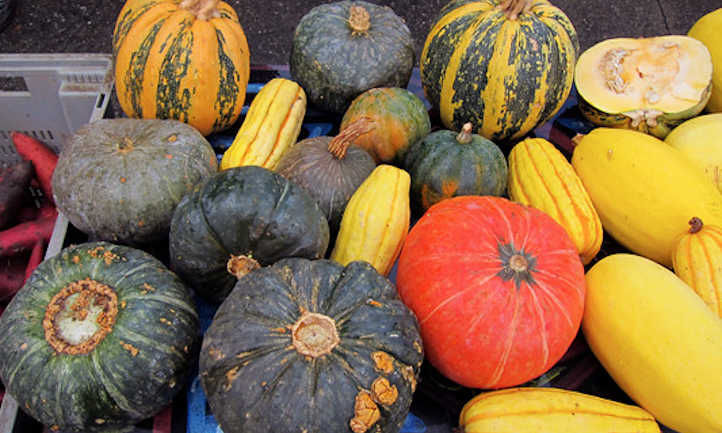
Growing winter squash takes about the same level of commitment as most garden vegetables. It’s a long season though, so you’ll need a good routine in place. Here’s how to grow winter squash.
Sun and Temperature
Despite its name, winter squash isn’t frost hardy. It needs to be in temperatures from 50-90°F, which is achievable in zones 2-11 from spring to fall. Higher temperatures will still allow the fruit to ripen but can damage the flowers. Plant your squash in full sun and away from shadow-casting plants.
Watering and Humidity
Keep the soil consistently moist by watering deeply once or twice a week. These plants retain water well, but can quickly run out in high heat, causing them to wilt. In the summer, you may be watering daily, so it’ll be beneficial to set up an irrigation system.
To prevent diseases, only water at the base of the plant so the rest is kept dry. It’s best to water in the morning so any excess moisture can evaporate before the heat of the afternoon. High humidity will increase the risk of pests and diseases, but we can’t control that much since squash grows outside. If you live in a humid area, be very vigilant about checking for symptoms.
Soil
Squashes have shallow roots, so you’ll have to keep up with keeping the soil moist. To prevent them from excess moisture, it’s very important to use well-draining soil. When you water, the soil should absorb it quickly without leaving large puddles behind. However, it needs to hold some moisture for at least a day or two. Spread mulch around the plant base to keep weeds out and moisture in.
When growing winter squash, the soil should be very fertile. In the fall before planting, add plenty of organic matter so it’ll break down by spring. If needed, feel free to apply an extra top dressing of composted matter during the summer. Your soil should be loose and loamy. Squash isn’t too picky about pH, but does best in a range from 5.5-7.0.
Fertilizing
Winter squash has a long growing season and needs nutrients to sustain it. You should supplement with fertilizer at least once or twice during the season. Some gardeners even choose to use it every other week! If you plan to fertilize more often, go with a fast-acting liquid fertilizer. Otherwise, slow-release granules will work great.
Use a fertilizer that’s a little lower in nitrogen. Nitrogen boosts green growth at the expense of fruit production. A good NPK to look for is 5-10-10. You can also use a balanced 5-5-5 fertilizer with occasional additions of kelp meal and bone meal.
Pruning / Training
Winter squash vines shouldn’t have any problem climbing a trellis that’s 5-8 feet tall. Put the support in place when you first plant the squash and let them do their thing. If the vines don’t get the idea, gently hook them on the trellis to encourage upward growth. A loose loop of plastic garden tape can provide extra support. Just remember that as the fruit develops, it may need extra support as well.
You’ll see moderate growth at first and then a burst of vines in late summer. If you start getting short on space, you may want to prune the unruly vines (this is entirely optional). However, try to hold off until there’s squash growing on the vines. Then, when you prune, the energy will be directed into fruit growth.
Squash and pumpkin plants have primary, secondary, and tertiary vines. The squash grows on secondary vines, so you’ll want to leave those alone. Stick to pruning the tertiary vines to keep the plant healthy. It’s also best to prune when the plant is dry to prevent diseases from getting into the wounds.
With pruning, it’s better to not do enough than prune too much. The squash production depends on the leaves, so don’t remove too many. Keep in mind that even though squash looks like a sturdy plant, the vines can break if handled roughly. Be gentle with them, the roots, and young squash.
Propagation
Since they’re annuals, it’s not really worth propagating by anything but seeds. Luckily, the seeds grow quickly and easily. If they aren’t your style though, you may be able to find starts at a nursery.
It’s possible to save your own seeds, but much more difficult than ordering some online for a few bucks. Many squashes are hybrids that produce sterile seeds. Besides that, there’s a good chance that cross-pollination has occurred and the seeds won’t be true to type.
If you want to give it a go anyways, choose a healthy, mature squash that’s an heirloom variety without any soft spots. When ripe, the seeds will turn dark brown. Separate them from the flesh and dump them into a container of water. Leave the seeds submerged for 2-4 days, during which time viruses will die and good seeds will sink to the bottom. Remove the good seeds and let them air dry.
Once they’re 100 percent dry, store the seeds in a container labelled with the date and variety of winter squash. Keep them in the fridge or another cool and dry place. The seeds will be viable for about three years, but should be used as soon as possible.
Harvesting and Storing
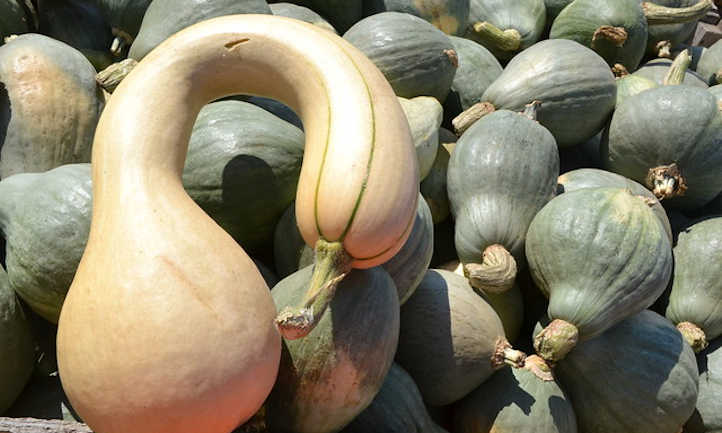
You’ve been working all spring and summer to cultivate these beauties and now you get to really enjoy them. Once harvested, squash are easily stored and will feed you and your family all winter long.
Harvesting
Depending on when you started the seeds, you’ll be harvesting in late summer and early fall. Ensure that you get all your harvesting done before the first frost settles in or you’ll have less fruit than you planned!
When winter squash is ripe, the rind is thick and hard. Often it’s so hard that you won’t be able to dent it with your thumbnail. It will also sound hollow when you thump it with your fist and have no soft spots. It will have turned its full color but will be dull.
To avoid hurting the rest of the plant, use clippers or a knife to cut the squash off the vine. If you leave a few inches of stem attached, it will help the squash store longer. Don’t pick it up by the stem though or you may end up with a smashed pumpkin.
After they’ve been picked, leave your squashes out in the sun for one to two weeks. This lets them cure, a method of preserving that hardens the skin even more and eliminates soft spots. If the weather doesn’t allow this, place them in the sunniest part of your house. Hold off on washing the squash until you’re ready to cook it.
If you’re adventurous in the kitchen, try harvesting some of the male blossoms. They can be harvested throughout the season. Clip them off the stem in the afternoon when they’re fully open. Don’t take too many though! These flowers are essential for pollination.
Storing
When stored correctly, squash will usually last for 6 months (depending on the variety of winter squash). Keep the squash somewhere dry, dark, and cool (not cold). You can also cook it first, cube or puree the flesh, and then freeze or can it. Freezing will make them last about 3 months while canned fruit flesh lasts 1-2 years.
There are hundreds of squash recipes out there. The flesh is popular in soups, pasta, casseroles, pies, and even salads. The rich texture and taste also make winter squash flesh well-suited to stand on its own. It’s delicious when roasted and topped with butter and brown sugar, which is my personal favorite!
Don’t forget the seeds. Squash seeds are edible. If you aren’t saving them to plant, you can still enjoy them as food. Roasted squash seeds will keep for a week or two. For longer storage, thoroughly rinse off all squash juice and pick off any remaining stringy material, then air-dry them until completely dry. Store in a dark location in an airtight container with a moisture absorbing packet. You can then soak them for 24-48 hours to rehydrate them and roast later.
As for the flowers, carefully submerge them in cold water and store them in the fridge like that. Dry them in a salad spinner or on a paper towel. They’re usually battered and fried or used as wraps, like dumplings. You can also roast the seeds like you would with pumpkin seeds.
Troubleshooting

Pests and diseases are dangerous threats to growing winter squash, so you have to be on the lookout for symptoms. Catching them early on can make the difference between life and death for your plants.
Growing Problems
Squash plants grow separate male and female flowers, so you’ll need to pollinate by hand if the local pollinators let you down. The male flowers bloom first, followed closely by the females. Only the female flowers will grow fruit so don’t be surprised when the males eventually fade. You don’t need to be a trained botanist to tell a girl flower from a boy flower. Just look at what the flower’s growing on. Males bloom from a thin stem while females are set on ovate bulges – a squash in the making!
A common symptom in most types of squash is wilting leaves. This is usually a sign that the plant is underwatered. Give it a deep, hearty drink and it should quickly recover. If this doesn’t seem to be the case, try upping your fertilizer game. Worst case scenario, this could be a symptom of insect damage or disease. These problems are usually accompanied by other symptoms, which we’ll go over below.
Pests
Besides some resistant squash types, most squashes are very susceptible to bugs. If you’d rather not spend your summer battling pests, we recommend using floating row covers until the plants bloom. These are excellent at preventing insects from laying eggs on your plant. Regardless, here are the most common pests to watch out for:
Squash vine borer is exactly what it sounds like. This insect bores through squash vines, winter and summer squash alike. It’s actually the larvae of the black and red clearwing moth. They tunnel into the stems and feed on the interior. You’ll notice small holes in the vines with frass, a sawdust-like debris, around them. Prevent borers by regularly dusting the plant with diatomaceous earth and wrapping the stems in aluminum foil. Neem oil will smother the eggs, so apply that frequently as well. A good environmental control is adding beneficial nematodes to the soil.
If you notice wilting, discolored leaves and dying squashes, you may have a squash bug infestation on your hands. These pests are greyish-brown and have flat, shield-shaped bodies. They suck out plant sap and replace it with toxins that often carry diseases. Like the borer, prevent squash bugs with diatomaceous earth or neem oil.
The cucumber beetle doesn’t sound as threatening to squash plants, but infestations of it are practically a death sentence. The adult beetles will feed on your vines while their larvae munch away at the roots. They can carry dangerous diseases such as bacterial wilt. There are many types of cucumber beetles that look slightly different, so you may want to check out our article on them for reference pictures. Pyrethrin spray is useful against these buggers, as are ladybugs and lacewings.
As if all that isn’t enough to worry about, you need to be on the lookout for aphids. They may be small, but large numbers of aphids will suck your plants dry. Your squash will yellow, wilt, and be exposed to plant pathogens. Insecticidal soap is an excellent control, but a mix of water and dish soap works fine too. Diatomaceous earth, neem oil, ladybugs, and lacewings also deter aphid populations.
Diseases
There are some disease-resistant types of squash. You can further prevent diseases by controlling pests and keeping the foliage dry. A general prevention method is to slide a piece of wood or plastic under each fruit to separate it from the soil. This will lessen the fruit’s exposure to pests and diseases while also preventing soft spots.
Bacterial wilt is spread by cucumber beetles and can quickly affect your plants. It causes the entire plant, including the fruit flesh and rind, to wilt. Once infected, you can’t cure your vines of bacterial wilt. Because of this, it’s incredibly important to focus on prevention – specifically by getting rid of cucumber beetles.
Mosaic virus isn’t always noticeable right away but eventually causes cupped leaves and weird coloration patterns. The plant can become distorted, lose its vigor, and produce swollen squash. Mosaic virus is generally spread through seeds, so it can be prevented by buying from a reputable seller and not saving your own seeds. It can also spread by cucumber beetles. Once you notice any sign of infection, you’ll have to destroy the whole plant before it passes the disease to its neighbors.
Lastly, watch out for powdery mildew. This fungus looks like a dusting of white powder on the squash leaves. It blocks out the sun so the plant cannot photosynthesize. As a result, it will have stunted growth nutrient deficiencies. This fungus is encouraged by damp leaves, so keep them as dry as possible. If your squash plant is dense with vines, prune a few to provide good aeration. If you still end up with powdery mildew on your plants, use a copper fungicide to combat it.
Frequently Asked Questions
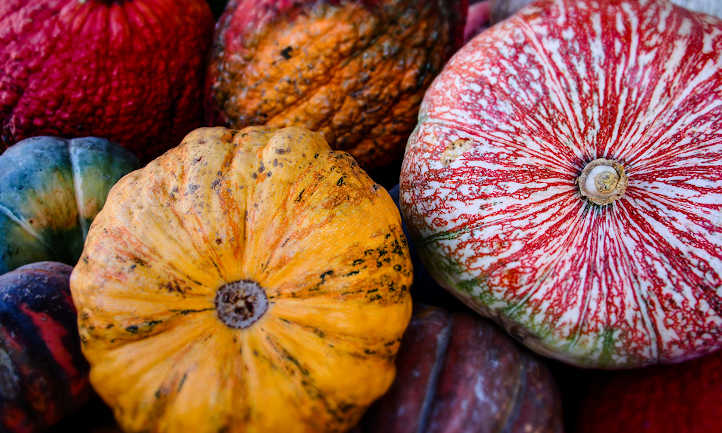
Q: How long does it take to grow winter squash?
A: Most squash varieties take 80-110 days to produce ripe squash flesh. They’re planted in early spring and are ready for harvest in the fall.
Q: How do you harden winter squash?
A: After cutting it off the vine, let your squash sit out in the sun for 1-2 weeks. This will “cure” the skin and eliminate soft spots.
Q: Will winter squash ripen after picking?
A: Yes, it can ripen slightly during curing. Still, we recommend waiting until it’s just ripe before picking.



